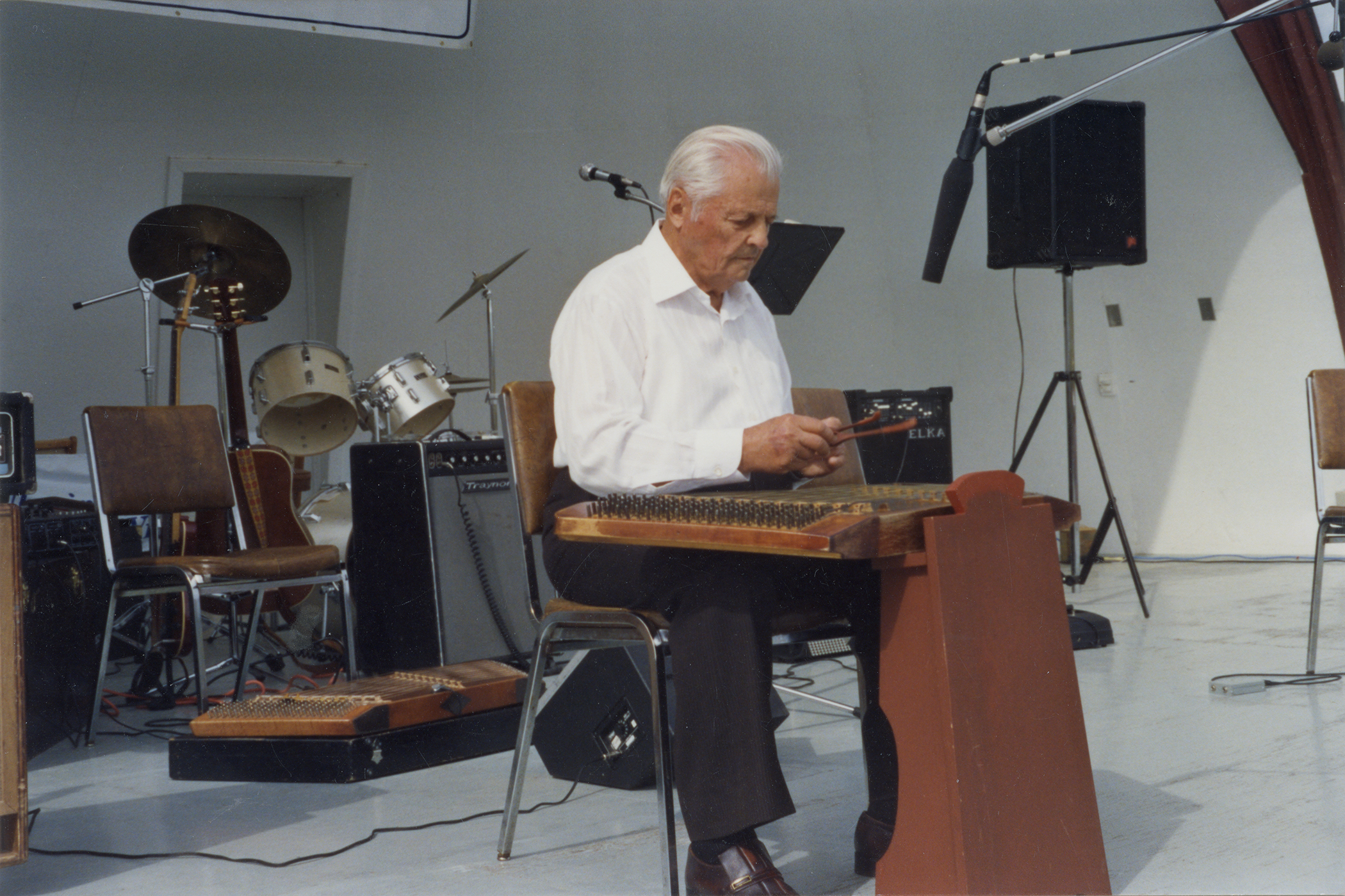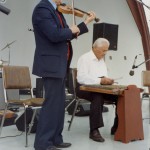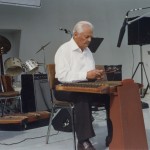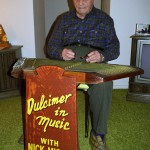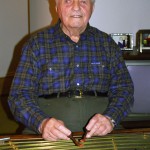Necolai “Nick” Mischi was eight years old in 1915 when he fell in love for the first time. It happened the day his uncle Mikhalo, a professional bandmaster, introduced him to his first tsymbaly – a string instrument also called hammer dulcimer.
“This is for me,” he thought. And for the next 90 years, it was. He lived to within a whisker of 100 years, and his beloved dulcimer was never far from reach.
Mr. Mischi was 73 years old the first time I saw him play at an Edmonton dance in 1980. His hands moved with lightning precision across the strings, as the melody of a traditional Ukrainian folk song danced in his heart. A smile came to the corner of his mouth.
“I go somewhere else when I play the dulcimer,” he smiled softly. “It makes me happy. It gives me life.”
It wasn’t until years later that I learned the full story of the remarkable life journey he had taken with the dulcimer. By the time Nick was ten, he was playing in his uncle’s band at weddings and parties around the Bukovina province of Ukraine.
“What a life it was,” he remembered. “There was always somewhere to go, some new things to see.” The life was so appealing that he never returned to school but learned on his own as he went, playing and making money. By age 12, he was considered one of the best dulcimer players in Ukraine.
After the First World War, Romania took over Bukovina and Nick didn’t wish to serve in the Romanian army, so he fled to Canada. He arrived in Halifax in 1928 and, heeding a voice that told him to “go west,” hopped the train and disembarked in Edmonton on August 18, 1928.
“That was a Saturday, and on Monday I was working on the extra gang for Canadian National Railways,” he recalled. “The pay was 25 cents an hour for a ten-hour day, and room and board was $1 a day and five cents went to medical. That didn’t leave much, but it was a job.”
Two years later while on a job near Gainford, somebody asked him if he could still play the dulcimer. Nick and a friend headed to Edmonton, and they found one in a Ukrainian bookstore on Jasper Avenue.
“It was $47,” Nick remembered. For a young man making 38 cents an hour, that was a lot of money, but he knew he had to have this instrument, handcrafted in Winnipeg from Manitoba maple. For more than 75 years, that was his dulcimer.
“I like the sound,” he smiled. And so did countless many others. I first saw Mr. Mischi play in public in the mid-1980s and couldn’t believe the instantaneous reaction. A glow seemed to fill the room as the melodic, resonant sound from the dulcimer washed over us.
Watching this grand old man play the instrument was hypnotic. When Nick played, his uncle’s words guided him still. “He told me, ‘Never mind if you are playing for one person, 100 or 1,000. You get up there and do your work.’”
Over nearly 90 years of performing, Nick gave thousands of concerts, appeared on hundreds of radio programs, recorded several albums and was recognized with countless awards. He was inducted into the Canadian Ukrainian Music Hall of Fame in June 1994.
His repertoire included hundreds of traditional Ukrainian folk songs and even some English favourites like “Somewhere My Love” and “Those Were the Days.” “I learned them because people sometimes want to hear songs they recognize,” Nick explained.
Along the way, he taught dozens of young people how to play the dulcimer. “If they want to learn, I will teach,” he said simply. But as time wore on, it became more difficult to compete with the appeal of instruments like the guitar. “That’s what many young people want to play; what can you do?” he shrugged.
Despite advanced years, Nick’s talent remained intact. He never learned to read music and played only by ear. In 1992 he took first place in the Master’s division at the Ukrainian Amateur Music Festival.
He recorded music with a variety of groups, including the University of Alberta Chamber Orchestra and the Edmonton Symphony Orchestra. In 1993 he was inducted into the Ukrainian Music Hall of Fame at the Vegreville Pysanka Festival.
Nick outlived two wives and even into his nineties remained fiercely independent – living in his own home, maintaining his yard and garden, and still growing and preserving his vegetables and apples. He drove his car until his 99th birthday.
In his final years, the dulcimer would still be pulled out for special occasions but he mostly retired from playing in public. “There’s a time to start and a time to quit,” he explained. “I wanted to quit before I was an old man falling down.”
Both his parents died young (his father at 42 and his mother at 41) but well into the final years of his life, Nick enjoyed robust good health. He credited his longevity to keeping active – mind and body. “Sometimes my arthritis tells me to slow down, but I can go slow. I have time; I get the job done in my time,” he said.
For this grand old man with a song in his heart, it was a life of melody and contentment. “When I plant every spring, I ask God for one more harvest,” he smiled the last time we talked. “When I harvest, I ask for one more chance to see the blossoms. So far, he has heard me every time.”
Listen to Nick Mischi playing the dulcimer with the Marengos Band Orchestra:
https://www.youtube.com/watch?v=e_fEhd9H6Rg
© 2016 Lawrence Herzog

